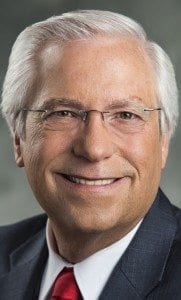BY BILL JOHN BAKER
 Social scientists have long understood that a child’s environment, in particular growing up in poverty, can have a long-lasting effect on their success later in life. Harvard University has released a study, called the Opportunity Atlas, that explores which neighborhoods and communities in America offer children the best chance to rise out of poverty.
Social scientists have long understood that a child’s environment, in particular growing up in poverty, can have a long-lasting effect on their success later in life. Harvard University has released a study, called the Opportunity Atlas, that explores which neighborhoods and communities in America offer children the best chance to rise out of poverty.
The study does not focus solely on how poverty impacts children in certain areas of the country but strives to understand exactly how resources and remedies can combat poverty if they are made available. Using the data of 20 million Americans born in the late 1970s and early 1980s, and following their data from childhood to their mid-30s, the Harvard study traces the roots of today’s affluence and poverty back to the communities where people grew up. It examines what was missing and proposes solutions to help more children rise out of poverty.
The results show northeastern Oklahoma is an area with some of the best outcomes for American Indian children in the country. These are kids who were born in low-income families but moved into the middle class as adults. From the Cherokee Nation’s perspective, this study is proof that our tribe and all of its resources – services like health care, college scholarships and housing, combined with job opportunities provided by our casinos and federal 8(a) contracts – are helping our citizens achieve some of the most favorable outcomes of the study.
How we got here is a wonderful story of perseverance and resiliency.
If you look at the timeline for the Opportunity Atlas, it corresponds almost perfectly with the passage of the Indian Self-Determination and Education Assistance Act of 1975, which allowed tribes to decide how best to spend their allocated federal dollars for education, health and other programs. The Cherokee Nation was, for the first time in nearly a century, in direct control of our own resources.
Over time, we began building and operating our own health centers, adding services and reaching more of our citizens. We built homes so tribal families could have equity with our nontribal neighbors. With a stronger, safer and more stable foundation, our people began to see what was possible.
We were again deciding for ourselves what the best investments would be for our future success, and those investments directly correspond with what Harvard found was an upwardly mobile and flourishing generation of Cherokee young adults who are now in their late 30s and early 40s.
They were children born at W.W. Hastings Hospital, who attended Cherokee Nation Head Start, got vaccinations and checkups at Cherokee Nation clinics every year, and used our facilities for dental and vision care. They were able to run for Youth Council, vie for Miss Cherokee, utilize JOM programs, take advantage of Cherokee Nation educational scholarships, participate in language classes and see examples of leadership and good governance through their tribal government.
They graduated from high school at higher rates than ever, earned undergraduate and advanced degrees, and found good jobs with our tribe. Many served our country honorably through military service and came home to find a job waiting for them within our tribe, something that, sadly, wasn’t always guaranteed for their parents or grandparents.
Over this same time period, we opened gaming operations and began leveraging our competitive advantages into nongaming businesses to perform work for the federal government in the 8(a) sector. These businesses not only created independent revenue for the tribe; they also created thousands of good, quality jobs across the tribe’s jurisdiction, a 7,000-square-mile region.
Creating jobs means we hired these Cherokees who can now provide for their families and are able to stay in their home communities, close to their extended families. We have created better conditions in our local public schools, improved infrastructure and increased the rate of homeownership. When our communities remain strong and Cherokees stay together, our culture remains strong and our language is spoken among our elders and passed on to our young people.
Success opened the door for us to build capacity in our citizens. We could begin offering expanded programs for young Cherokees with youth internships, job training programs and more college scholarships than ever before.
The Cherokee Nation has made quality investments in our young people through the years. Today’s generation of Cherokees in their 30s and 40s are the product of resources previous generations fought for but were not available for themselves. The success earned by this generation allows them to lay the foundation for giving back to the generations that follow, much like the generations who came before them – a generation who gave back so selflessly, despite having little to give themselves.
That is what Harvard’s Opportunity Atlas shows: The Cherokee Nation’s model of community support through safety nets and helping one another, combined with economic opportunities and investing in our businesses, works. It has aided an entire generation of Cherokees born in northeast Oklahoma from the late 1970s to the early 1980s become more successful than any generation before them. It’s a proven successful formula and one that we plan to sustain for the next seven generations of Cherokees to come, and the Cherokee Nation will continue rising together.
To view the Harvard University Opportunity Atlas study, please visit www.opportunityatlas.org.
– Bill John Baker is principal chief of the Cherokee Nation








